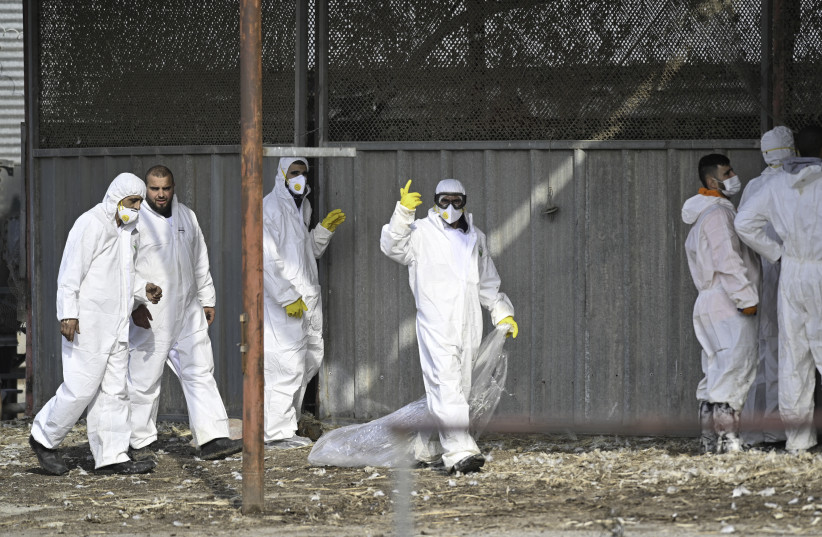250 birds infected with bird flu in first cases in Israel in over five months
About 250 peacocks, ducks, doves, and domesticated chickens at a petting zoo in Sde Ya’akov in northern Israel were found to be infected with the H5N1 subtype of highly pathogenic avian influenza (bird flu) on Wednesday, according to the Agriculture Ministry. The infections were the first detected in Israel in over five months.
The ministry is operating by the policies recommended by the World Organization for Animal Health (WOAH) to stop the virus from spreading. The Health Ministry and Nature and Parks Authority have been updated about the outbreak.
All poultry coops in a 10-kilometer radius have been locked down as well to prevent the spread of the virus.
The Agriculture Ministry called on all poultry owners to keep their birds inside buildings and prevent them from wandering in open areas to decrease the risk of infection as the migration season begins.
The last case of bird flu reported in Israel was in April, when an Armenian gull was found dead at the Habonim Beach Nature Reserve, north of Zichron Ya’akov. The last case before that was in January when a northern shoveler was found to be infected with the H5N1 strain in Modi’in.

Since 2021, Europe and the Americas have been suffering from a nearly continuous outbreak of H5N1 avian influenza which has been described as “the largest-ever” outbreak on the three continents. The virus has affected tens of millions of birds and thousands of mammals across the world.
Recently, a severe outbreak of both the H5N1 and H7N6 subtypes of bird flu has hit South Africa as well, killing millions of birds.
A peer-reviewed study published in June found that the ongoing global outbreak has been marked by rapid genetic changes and highly increased virulence in both birds and mammals.
Scientists are concerned bird flu could devastate Antarctica soon
As the migratory season begins, scientists have expressed concerns that the outbreak could spread to Antarctica and devastate penguin and seal populations.
Dr Jane Rumble, OBE, told The Telegraph on Monday that “It could be absolutely devastating. We’re saying when, not if.”
“Animals tend to concentrate together. Some sites will have gentoo penguins, chinstrap penguins, elephant seals, fur seals, and they’re all basically together,” added Rumble, explaining that the dense colonies could help the virus spread. “Their natural predators are in the water, so they don’t avoid each other on land.”
“We are enhancing the biosecurity protocols to prevent human exacerbation. Visitors are getting hoovered – literally – to get seeds out of clothes and bags. Boots will be disinfected when they go ashore so they’re not transmitting any kind of disease from one site to another,” added Rumble.
Last week, three birds on the Galapagos Islands were found to be infected with H5N1 avian influenza.
The Galapagos Islands, an archipelago located hundreds of kilometers off the coast of Ecuador, are known for their large number of diverse and unusual endemic species, including finches and cormorants, which helped Charles Darwin develop his theory of evolution in the 1830s.





Comments are closed.